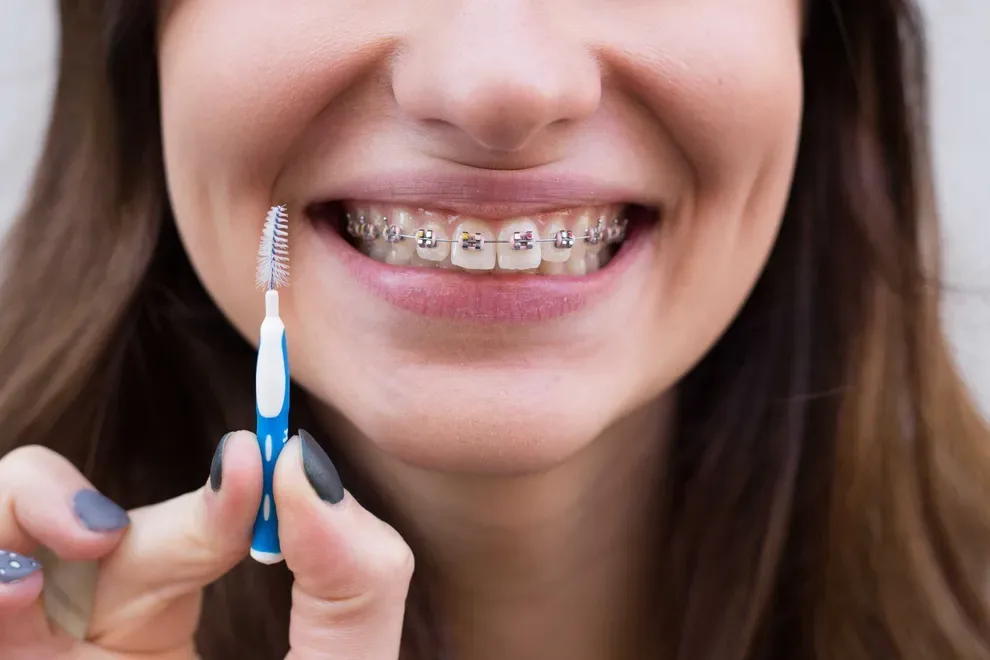Interdental Brushes: Overview & Floss Comparison

Table of Contents
- Are Interdental Brushes Necessary
- What Are Interdental Brushes
- Interdental Brushes vs Dental Floss
- Cleaning Between Your Teeth
- References
Interdental brushes come in a range of sizes designed to fit between the spaces between your teeth. These devices seem to be more effective at removing plaque compared to dental floss because they are easier to use, and their shape improves the amount of tooth surface they can clean.
Do I Have to Add Interdental Brushes to My Oral Care Routine?
Interdental brushes are one device that helps interdental cleaning. Most people are familiar with dental floss, although they may be reluctant to floss once or twice per day.
Because flossing requires a good grip and finding the right angle in your mouth to get between all your teeth, many people do not floss often, do not floss thoroughly enough, or do not floss all their teeth. Some people do not floss at all. Interdental brushes provide another option to good oral hygiene, using a simpler device.
More dentists are recommending interdental brushes, not just because they are new or trendy, but because they can actually improve oral health.
What Are Interdental Brushes?
Interdental brushes are an alternative to dental floss, especially for people who have a history of gingivitis or periodontal disease, people with larger gaps between their teeth, or people who simply do not like flossing.
These devices were once only available in larger sizes, designed for people with gaps that made standard dental floss ineffective. Today, there are many sizes of interdental brushes, including some for people who may have crowded teeth.
These brushes effectively reduce the amount of interproximal plaque that collects between your teeth, particularly in the molars where it may be harder to reach with floss. These brushes were introduced around 1976. They consist of a metal wire core, which may be coated for people who have dental crowns or bridges to reduce damage to the material, with soft nylon filaments twisted around it. This is attached to a handle, like a toothbrush or pen.
In 2015, the European Federation of Periodontology found that interdental brushes were the most effective type of interdental cleaning available, removing proximal plaque better than floss, water picks, or other devices. Floss might be more effective for flatter areas or tighter spaces, but interdental brushes can remove plaque from the curved sides of your teeth.
Interdental brushes also help to reduce bleeding of the gums, which is a benefit for people who have periodontal disease like gingivitis. Reduced bleeding can also indicate less damage to the gums during cleaning, which can also decrease the risk of future periodontal disease by causing fewer wounds.
How to choose an interdental brush:
Find the right size brush, which can depend on the spacing between your teeth.
Find an interdental brush that has a coating on the inner wire if you have dental crowns or significant fillings.
Decide whether you clean your teeth better with a straight brush or a brush with a crooked handle. Usually, straighter is better.
Consider a rubber interdental brush if you have sensitive teeth or root surfaces.
Interdental brushes may also remove more plaque and food particles from your teeth, which can reduce gum disease and tooth decay.
Are Interdental Brushes Better Than Dental Floss?
Patient preference determines whether dental floss or interdental brushes are a better choice. Several studies have noted that participants preferred interdental brushes to dental floss, which means their oral health will improve if they use them more.
The Canadian Journal of Dental Hygiene (CJDH) found in 2012 that people preferred interdental brushes because they were easier to use than dental floss. While interdental brushes are not as sturdy as a standard toothbrush and may buckle or bend, the CJDH found that study participants said the brush was better because it could be used one-handed, rather than two-handed, and that was more time efficient.
A more recent 2019 study found that flossing did not necessarily reduce plaque concentration at certain depths compared to interdental brushes. It also did not reduce the risk of gingivitis.
Although flossing is still an important component of oral hygiene, interdental brushes may be a better option for many people. Ask your dentist about which type of interdental brush might work best for your teeth.
Cleaning Between Your Teeth is Important for Good Oral Health
Interdental cleaning can remove debris and plaque that your toothbrush cannot remove, so their use can be an important part of your overall oral care routine. Whether you use an interdental brush, dental floss, a water pick, or a combination of these devices, interdental cleaning is better than only brushing your teeth.
